869-24-9
| 中文名 | 2-二乙氨基氯乙烷盐酸盐 |
|---|---|
| 英文名 | 2-Diethylaminoethylchloride Hydrochloride |
| 中文别名 | 盐酸-2-二乙氨基氯乙烷 |
| 英文别名 |
(β-Chloroethyl)diethylamine hydrochloride
β-(Diethylamino)ethyl chloride hydrochloride Diethyl(β-chloroethyl)amine hydrochloride 2-Diethylamino ethylchloride HCL 2-Chloro-N,N-diethylethanamine hydrochloride (1:1) MFCD00008385 β-Chloroethyldiethylamine hydrochloride 2-Diethylaminoethylchloride hydrochloride Diethyl-β-chloroethylamine hydrochloride Ethanamine, 2-chloro-N,N-diethyl-, hydrochloride (1:1) N,N-Diethyl-β-chloroethylamine hydrochloride EINECS 210-673-4 Amiodarone Impurity 8 |
| 沸点 | 255 °C(lit.) |
|---|---|
| 熔点 | 50-53 °C(lit.) |
| 分子式 | C6H15Cl2N |
| 分子量 | 172.096 |
| 闪点 | 186 °F |
| 精确质量 | 171.058151 |
| PSA | 3.24000 |
| LogP | 2.36900 |
| 外观性状 | 透明至米色晶体 |
| 储存条件 | 保持容器密封,储存在阴凉,干燥的地方。 |
| 稳定性 | 常温常压下稳定,避免氧化物 碱接触 有毒物质,与皮肤接触、吞咽有害。吸入极毒,刺激眼睛,刺激呼吸道,刺激皮肤。万一接触眼睛,立即使用大量清水冲洗并送医诊治。出现意外或者感到不适,立即就医(最好带去产品容器标签)。 |
| 水溶解性 | 2000 g/L (20 ºC) |
| 计算化学 | 1.疏水参数计算参考值(XlogP):无 2.氢键供体数量:1 3.氢键受体数量:1 4.可旋转化学键数量:4 5.互变异构体数量:无 6.拓扑分子极性表面积3.2 7.重原子数量:9 8.表面电荷:0 9.复杂度:43.8 10.同位素原子数量:0 11.确定原子立构中心数量:0 12.不确定原子立构中心数量:0 13.确定化学键立构中心数量:0 14.不确定化学键立构中心数量:0 15.共价键单元数量:2 |
| 更多 | 1. 性状:白色针状结晶 2. 密度(g/mL,25/4℃):未确定 3. 相对蒸汽密度(g/mL,空气=1):未确定 4. 熔点(ºC):210-212 5. 沸点(ºC,常压):255 6. 沸点(ºC,5.2kPa):未确定 7. 折射率:未确定 8. 闪点(ºF):186 9. 比旋光度(º):未确定 10. 自燃点或引燃温度(ºC):未确定 11. 蒸气压(kPa,25ºC):未确定 12. 饱和蒸气压(kPa,60ºC):未确定 13. 燃烧热(KJ/mol):未确定 14. 临界温度(ºC):未确定 15. 临界压力(KPa):未确定 16. 油水(辛醇/水)分配系数的对数值:未确定 17. 爆炸上限(%,V/V):未确定 18. 爆炸下限(%,V/V):未确定 19. 溶解性:溶于乙醇,微溶于丙酮。 |
Synonym:2-Chloro-N,N-Diethylethylamine Hydrochloride; 2-Chlorotriethylamine Hydrochloride; DE Section 2 - COMPOSITION, INFORMATION ON INGREDIENTS
Risk Phrases: 26 36/37/38 24/25 Section 3 - HAZARDS IDENTIFICATION EMERGENCY OVERVIEW
Very toxic by inhalation. Irritating to eyes, respiratory system and skin. Toxic in contact with skin and if swallowed.Hygroscopic (absorbs moisture from the air).The toxicological properties of this material have not been fully investigated. Potential Health Effects Eye: Causes eye irritation. Skin: Causes skin irritation. May be fatal if absorbed through the skin. May cause dermatitis. Ingestion: May be fatal if swallowed. Causes gastrointestinal irritation with nausea, vomiting and diarrhea. The toxicological properties of this substance have not been fully investigated. May cause burning sensations, coughing, wheezing, laryngitis, shortness of breath and headache. Inhalation: May be fatal if inhaled. Causes respiratory tract irritation. The toxicological properties of this substance have not been fully investigated. May cause dyspnea (difficult or labored breathing). May cause burning sensation, coughing, wheezing, laryngitis, shortness of breath, headache, nausea, and vomiting. Chronic: Laboratory experiments have resulted in mutagenic effects. Section 4 - FIRST AID MEASURES Eyes: Immediately flush eyes with plenty of water for at least 15 minutes, occasionally lifting the upper and lower eyelids. Get medical aid immediately. Skin: Get medical aid immediately. Immediately flush skin with plenty of water for at least 15 minutes while removing contaminated clothing and shoes. Ingestion: Never give anything by mouth to an unconscious person. Get medical aid immediately. Do NOT induce vomiting. If conscious and alert, rinse mouth and drink 2-4 cupfuls of milk or water. Inhalation: Get medical aid immediately. Remove from exposure and move to fresh air immediately. If breathing is difficult, give oxygen. Do NOT use mouth-to-mouth resuscitation. If breathing has ceased apply artificial respiration using oxygen and a suitable mechanical device such as a bag and a mask. Notes to Physician: Treat symptomatically and supportively. Section 5 - FIRE FIGHTING MEASURES General Information: As in any fire, wear a self-contained breathing apparatus in pressure-demand, MSHA/NIOSH (approved or equivalent), and full protective gear. During a fire, irritating and highly toxic gases may be generated by thermal decomposition or combustion. Extinguishing Media: Use water spray, dry chemical, carbon dioxide, or appropriate foam. Section 6 - ACCIDENTAL RELEASE MEASURES General Information: Use proper personal protective equipment as indicated in Section 8. Spills/Leaks: Clean up spills immediately, observing precautions in the Protective Equipment section. Sweep up, then place into a suitable container for disposal. Avoid generating dusty conditions. Provide ventilation. Do not get water inside containers. Section 7 - HANDLING and STORAGE Handling: Wash thoroughly after handling. Avoid contact with eyes, skin, and clothing. Keep container tightly closed. Avoid ingestion and inhalation. Do not allow contact with water. Use only in a chemical fume hood. Wash clothing before reuse. Keep from contact with moist air and steam. Storage: Store in a tightly closed container. Store in a cool, dry, well-ventilated area away from incompatible substances. Poison room locked. Store protected from moisture. Section 8 - EXPOSURE CONTROLS, PERSONAL PROTECTION Engineering Controls: Facilities storing or utilizing this material should be equipped with an eyewash facility and a safety shower. Use adequate ventilation to keep airborne concentrations low. Exposure Limits CAS# 869-24-9: Personal Protective Equipment Eyes: Wear appropriate protective eyeglasses or chemical safety goggles as described by OSHA's eye and face protection regulations in 29 CFR 1910.133 or European Standard EN166. Skin: Wear appropriate protective gloves to prevent skin exposure. Clothing: Wear appropriate protective clothing to prevent skin exposure. Respirators: Follow the OSHA respirator regulations found in 29 CFR 1910.134 or European Standard EN 149. Use a NIOSH/MSHA or European Standard EN 149 approved respirator if exposure limits are exceeded or if irritation or other symptoms are experienced. Section 9 - PHYSICAL AND CHEMICAL PROPERTIES Physical State: Crystalline powder Color: white to beige Odor: characteristic odor pH: 5 (100g/l aq. sol.) Vapor Pressure: Not available. Viscosity: Not available. Boiling Point: Not available. Freezing/Melting Point: 208.00 - 212.00 deg C Autoignition Temperature: Not available. Flash Point: Not available. Explosion Limits, lower: Not available. Explosion Limits, upper: Not available. Decomposition Temperature: > 220 deg C Solubility in water: 2000 g/l (20 c) Specific Gravity/Density: Molecular Formula: C6H14ClN.HCl Molecular Weight: 172.10 Section 10 - STABILITY AND REACTIVITY Chemical Stability: Stable at room temperature in closed containers under normal storage and handling conditions. Hygroscopic: absorbs moisture or water from the air. Conditions to Avoid: Dust generation, moisture. Incompatibilities with Other Materials: Strong oxidizing agents, strong bases. Hazardous Decomposition Products: Hydrogen chloride, nitrogen oxides, carbon monoxide, carbon dioxide. Hazardous Polymerization: Has not been reported. Section 11 - TOXICOLOGICAL INFORMATION RTECS#: CAS# 869-24-9: YE1050000 LD50/LC50: CAS# 869-24-9: Draize test, rabbit, eye: 100 mg Severe; Draize test, rabbit, skin: 500 mg Severe; Inhalation, rat: LC50 = 103 mg/m3/4H; Oral, rat: LD50 = 50 mg/kg; Skin, rabbit: LD50 = 125 mg/kg. LC50 1Hr (dust) = .412mg/L or 58.53ppm Carcinogenicity: 2-Diethylaminoethylchloride Hydrochloride - Not listed by ACGIH, IARC, or NTP. Other: See actual entry in RTECS for complete information. Section 12 - ECOLOGICAL INFORMATION Section 13 - DISPOSAL CONSIDERATIONS Dispose of in a manner consistent with federal, state, and local regulations. Section 14 - TRANSPORT INFORMATION IATA Shipping Name: TOXIC SOLIDS, ORGANIC, N.O.S. Hazard Class: 6.1 UN Number: 2811 Packing Group: I IMO Shipping Name: TOXIC SOLIDS, ORGANIC, N.O.S. Hazard Class: 6.1 UN Number: 2811 Packing Group: I RID/ADR Shipping Name: TOXIC SOLIDS, ORGANIC, N.O.S. Hazard Class: 6.1 UN Number: 2811 Packing group: I Section 15 - REGULATORY INFORMATION European/International Regulations European Labeling in Accordance with EC Directives Hazard Symbols: T+ Risk Phrases: R 24/25 Toxic in contact with skin and if swallowed. R 26 Very toxic by inhalation. R 36/37/38 Irritating to eyes, respiratory system and skin. Safety Phrases: S 26 In case of contact with eyes, rinse immediately with plenty of water and seek medical advice. S 28A After contact with skin, wash immediately with plenty of water. S 36/37/39 Wear suitable protective clothing, gloves and eye/face protection. S 45 In case of accident or if you feel unwell, seek medical advice immediately (show the label where possible). WGK (Water Danger/Protection) CAS# 869-24-9: 2 Canada CAS# 869-24-9 is listed on Canada's DSL List. CAS# 869-24-9 is not listed on Canada's Ingredient Disclosure List. US FEDERAL TSCA CAS# 869-24-9 is listed on the TSCA inventory. SECTION 16 - ADDITIONAL INFORMATION N/A |
|
毒理学数据: 1、急性毒性:小鼠口经LD50:320mg/kg;大鼠口经LD50:50mg/kg 2、急性毒性:小鼠腹腔LD50:71mg/kg;大鼠腹腔LD50:30mg/kg 生态学数据: 对水是危害的,即使是小量的产品渗入地下也会对饮用水造成危险若无政府许可,勿将材料排入周围环境。 CHEMICAL IDENTIFICATION
HEALTH HAZARD DATAACUTE TOXICITY DATA
MUTATION DATA
|
| 符号 |


GHS05, GHS06 |
|---|---|
| 信号词 | Danger |
| 危害声明 | H300 + H310 + H330-H315-H318-H335 |
| 警示性声明 | Missing Phrase - N15.00950417-P280-P302 + P352 + P310-P304 + P340 + P310-P305 + P351 + P338 + P310 |
| 个人防护装备 | Eyeshields;Faceshields;full-face particle respirator type N100 (US);Gloves;respirator cartridge type N100 (US);type P1 (EN143) respirator filter;type P2 (EN 143) respirator cartridges;type P3 (EN 143) respirator cartridges |
| 危害码 (欧洲) | Xn, T, Xi, T+ |
| 风险声明 (欧洲) | R24/25;R26;R36/37/38 |
| 安全声明 (欧洲) | S26-S36-S45-S36/37/39-S28A |
| 危险品运输编码 | UN 2811 6.1/PG 2 |
| WGK德国 | 3 |
| RTECS号 | DC2810000 |
| 包装等级 | II |
| 危险类别 | 6.1 |
| 海关编码 | 29211980 |
|
~46% 
869-24-9 |
| 文献:CHINA PHARMACEUTICAL UNIVERSITY; Xiang, Hua; Wang, Tianlin; Xiao, Hong; You, Qidong; Yao, Yao; Li, Xiaobo; Liao, Qingjiang Patent: US2013/85140 A1, 2013 ; Location in patent: Paragraph 0060; 0061 ; |
|
~% 
869-24-9 |
| 文献:Journal of the Chemical Society, , p. 2443 |
|
~46% 
869-24-9 |
| 文献:Li, Xuyuan; Meng, Yanfa; Zhao, Kehao; Tu, Weixia ACH - Models in Chemistry, 1997 , vol. 134, # 4 p. 383 - 393 |
|
~% 
869-24-9 |
| 文献:International Journal of Chemical Kinetics, , vol. 26, # 2 p. 309 - 315 |
| 上游产品 5 | |
|---|---|
| 下游产品 10 | |
| 海关编码 | 29211980 |
|---|

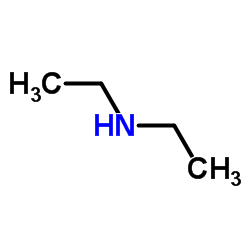
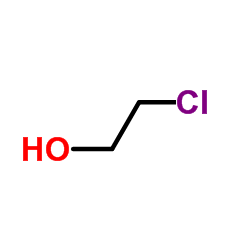
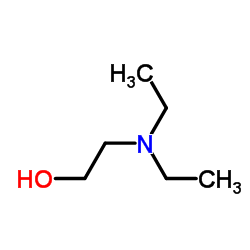

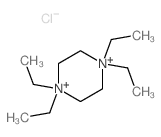
![N',N'-diethyl-N-(7,8,9,10-tetrahydro-6H-cyclohepta[b]quinolin-11-yl)ethane-1,2-diamine,dihydrochloride结构式](https://image.chemsrc.com/caspic/331/108154-76-3.png)
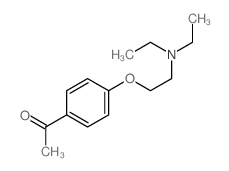

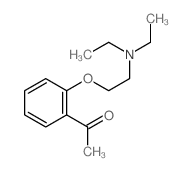
![2-[(2-chloro-1,3-benzothiazol-6-yl)oxy]-N,N-diethylethanamine结构式](https://image.chemsrc.com/caspic/262/184837-84-1.png)
![1,2-Ethanediamine,N1-[2-(diethylamino)ethyl]-N1,N2,N2-triethyl结构式](https://image.chemsrc.com/caspic/466/24426-21-9.png)
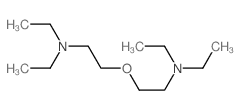
![Alpha-[Β-(二乙基氨基)乙基]乙酰乙酸乙酯结构式](https://image.chemsrc.com/caspic/012/23999-02-2.png)
![[2-(2-Phenoxyethoxy)ethyl]diethylamine结构式](https://image.chemsrc.com/caspic/411/24480-59-9.png)
